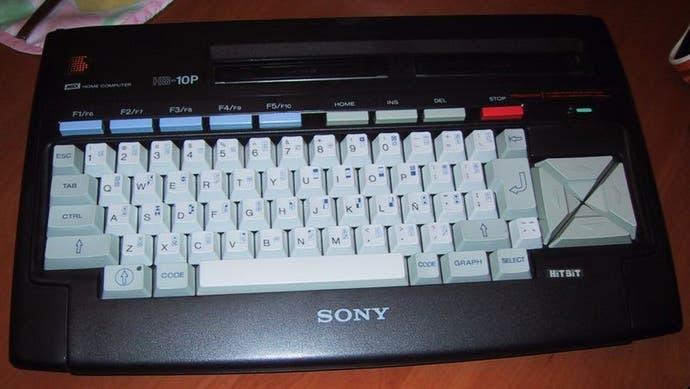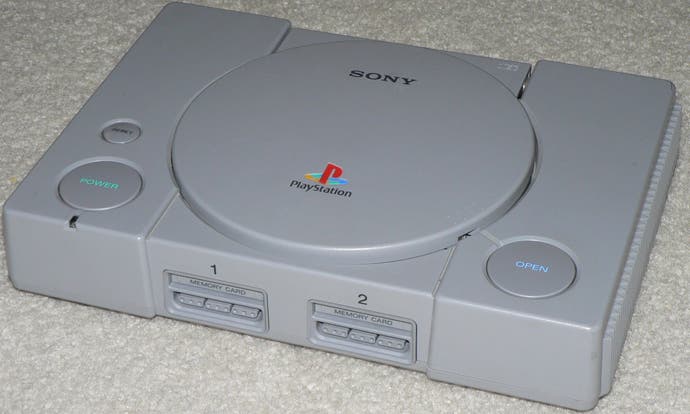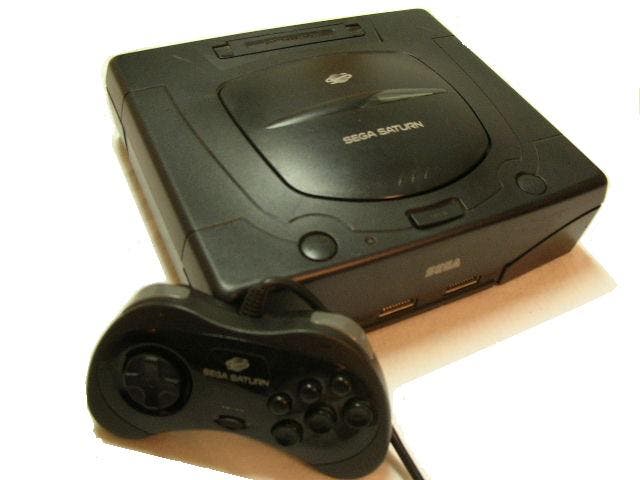PlayStation - The total history
Part 1: The build-up to the launch of the PSX.
Join us again in parts two and three as we lead up to the launch of Sony's PlayStation 3.
With eager punters currently snapping up every single PlayStation 3 that's out there, it's easy to imagine that this is what the world's always been like - that Sony has always been in charge of the videogame industry. But while hindsight suggests that the PlayStation's enormous success was inevitable, the truth is that the scale of Sony's achievement was simply inconceivable when it launched, and absolutely unprecedented at the time. Especially for a console that had started life as an aborted add-on for Nintendo's SNES.
The world was a very different place when PlayStation first arrived in the UK. For a start, OJ Simpson and Rosemary West had both been on trial, Cotton-Eyed Joe had just topped the music charts, and Nick Leeson had brought down Barings. Windows 95 had only just come out to replace the antiquated Windows 3.1, and there weren't any DVDs in the shops, just videotapes. It was against this background that early pundits, giddy with excitement about the hardware's potential, reckoned Sony's new PlayStation was so good it might sell as many units as the Nintendo 64 and Sega Saturn.
The first steps of what became the PlayStation had started life several years earlier. Sony's first foray into videogames was actually back in the mid '80s, ironically as one of the manufacturers of the Microsoft-backed MSX home computer, but it was a collaboration with another future competitor that would ultimately produce the PlayStation. Sony's dalliance with Nintendo stemmed from fears that the increasingly successful Game Boy would encroach upon sales of the Walkman, and produced a joint venture between the two companies that was supposed to see Sony develop a CD-ROM drive for Nintendo's Super Famicom.

The project was scheduled to be unveiled at the Consumer Electronics Show in 1989, but on the day that the add-on was due to be announced, Nintendo reneged on the deal. Fearing that the deal would give Sony too much control over the finished product, Nintendo's Hiroshi Yamauchi simply terminated the agreement. Nintendo would instead, it was announced, be working with Philips to produce the unit. The eventual fruit of that labour would be the Philips CD-i - an edutainment machine which is probably best remembered as home to some mind-bogglingly awful Zelda games and the 'attraction' at Euro Disney which stuck around for years.
The fruit of Sony's labour would be the PlayStation - probably best remembered for selling over 100 million units worldwide. It was championed internally by the R&D engineer who had overseen the abortive Famicom project, Ken Kutaragi, and referred to as PS-X inside the company as it made the transition from Nintendo peripheral to a fully-fledged games machine. It eventually launched in Japan on December 3, 1994.
Before the launch, the signs didn't bode well. Unlike its competitors, Sony didn't exactly have a strong track record in game development. Sony Interactive had a long track record of mediocrity, and when Psygnosis was acquired for $48m, its only truly big hit had been Lemmings, which had been developed at DMA Design in Scotland - and DMA signed up for Nintendo's 'Project Reality' in May 94.

It wasn't an especially good time to launch a console, either. 1993 had seen the start of an industry-wide slump which would last for about three years, reflected in the plummeting profits of the market leaders, Nintendo and Sega, and a decline in the US console market from $4.55bn in 1993 to $3.07bn in 1995. And in spite of the difficult market conditions, the Saturn's Japanese launch, a month earlier, had apparently been an amazing success. Sega shifted some 200,000 units amid scenes of hysteria, to gamers eager to part with $450-odd to play Virtua Fighter at home. By comparison the 100,000 PlayStation units that Sony shipped the following month, along with Namco's Ridge Racer, could be obtained easily without having to preorder.
But the US launch of the console, the following year, was different. An experienced management team, was made up of industry veterans like Steve Race (who had been in charge of Atari's European operations back in the days of the 2600, and had worked at Sega and Nintendo), and Bernie Stolar, who was responsible for enlisting thirdparty developers (one early masterstroke, which sounds unlikely now, was a six-month exclusivity deal for Mortal Kombat 3).
At the very first E3, in May 1995, Steve Race took to the stage. "I had a whole bunch of sheets of paper in my hands, and I walked up, put them down on the podium, and I just said, "$299," and walked off to this thunderous applause", he would later recall in Steven L Kent's The First Quarter. Such a low price point was a bombshell and all that Sony needed to steal the show. Sega, meanwhile, used the show to make the sort of cock-up that would characterise its approach to next-gen development for several years to follow. The company announced that the Saturn would launch early, in the stores of just four major retail chains. It was a move that alienated the other retailers, and took customers by surprise, resulting in the softest of soft launches.

When the PlayStation launched in the US in 1995, all of the available 100,000 units sold out in September, the month of its launch. In spite of the Saturn's five-month headstart, the PlayStation had outsold it within two days. At the end of the year it was Sony 800,000, Sega 400,000. The PlayStation was officially a success. By the end of the year there were 55 titles available. The following year, Sony dropped the price to a staggeringly low $199, and the industry was forced to follow suit. And it just got better and better for the PlayStation: it took Sony two years to sell 10 million consoles; then just nine months to sell the next 10 million, before the next 10 million sold within six months. Nobody had expected that.







